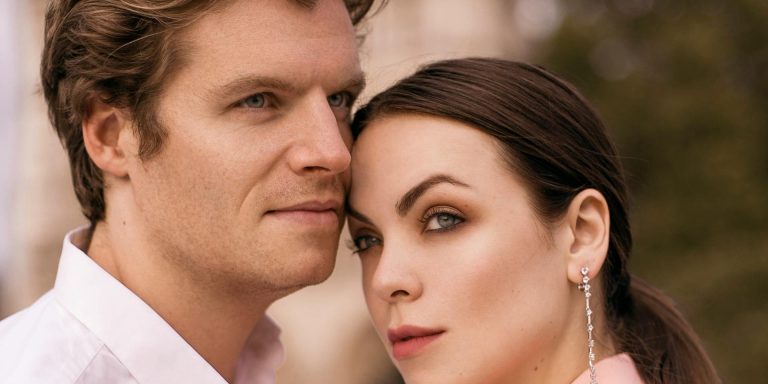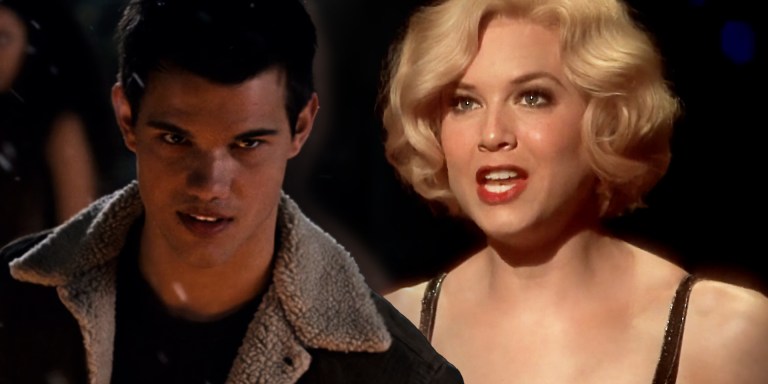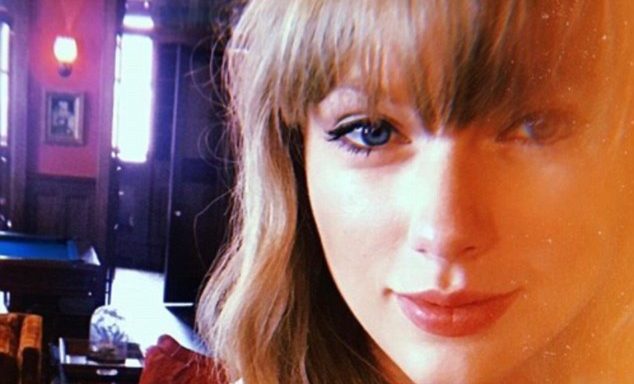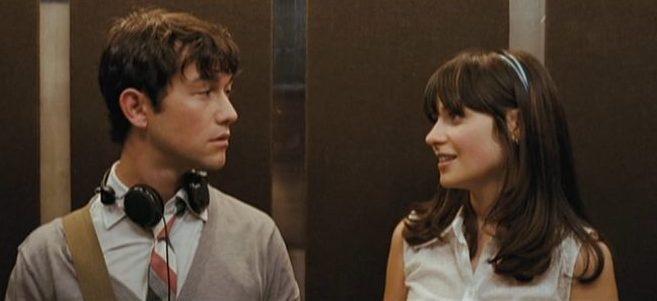There comes a time when every artist can believe that the business—whether it’s music or writing or painting or poems—is a terribly unfair place (Hunter S. Thompson said the record industry was a “a cruel and shallow money trench, a long plastic hallway where thieves and pimps run free and good men die like dogs.) For me, one of those crises of faith came in 2015. It wasn’t about my own writing; in fact, I was on a bit of a streak.
Instead, it came when I was watching a documentary about MxPx, a punk band I’d listened to a lot as a kid. The documentary opens with the band celebrating its 22nd year as a group. They’d released sixteen albums, twenty singles, three films, sold more than 2.5 million records, and toured hundreds of thousands of miles on every continent but Antartica. I remember watching the Super Bowl on TV in high school and seeing them in a commercial.
Accordingly, I’d held MxPx up as a model for what a kind of upper-middle class success for an artist would look like. They had never sold out, they had always made good music. They had started when they were in high school and stayed together the whole time. They toured constantly and never took their fans for granted. They seemed like good, hardworking people and deservedly had been rewarded with the kind of success most artists dream of.
And yet—and this nearly made me choke up—the documentary begins with the band as they are more or less deciding to break up. The band was having financial problems. They were tired. Two of the three members had decided to stop touring and take full-time jobs in the shipyards near where they grew up, just as their fathers had done a generation before. It was like the reverse of a Springsteen song. Instead of the dream taking them out of their small industrial town, it showed them all that was possible in the world and then cruelly dropped them back off there in their mid thirties.
How the hell does that happen?
I wanted to know, if only for myself. I had a book coming out in a few months and I was already at work on the next one, one that happened to be about artists and creatives who make work that stands the test of time. The industry term for that is “Perennial Sellers” (ironically, perennial-selling books are explicitly excluded from the New York Times Bestseller list) and they are responsible for the vast majority of revenue for book publishers, record labels, and movie studios. Yet here was MxPx, a band that had been in the game for two decades, suffering. Was I wrong? Were they a cautionary tale? Was the same thing going to happen to me? Could it happen to you?
I finally reached Mike Herrera, the band’s founder, lead singer, and songwriter, after he’d returned from a tour in Europe. It turned out that the documentary had come at a strange moment in the band’s career—a sort of dark before the dawn. Because, as it happened over the next several months, the band would would stick it out, use Kickstarter to raise $273,349 to produce a new album (on a $50k goal) and celebrate their 25th and 26th anniversaries by playing shows in the garage where the band had performed for the first time a quarter century earlier.
Given that that new album is out this month and that the first video of the first single shows a lonely punk kid at MxPx show growing up with the band, meeting his wife over their shared love of the band, and passing the music on to their daughter, I thought it was worth taking a second to look at how artists can build a legacy like this (and navigate the difficulties of the creative process). Because isn’t that why we do what we do—why we put up with the unfairness and the indignities and the pain of the business—to create something that lasts, that endures, that matters? To carve, as Arthur Miller wrote in Death of a Salesman, “one’s name on a cake of ice on a hot July day.”
Here is some of what I’ve learned:
1) Prepare for a Hard Road
“If I were to realize that door A, B, or C all lead to a lot of heartache and pain, but you know, A was what I really want, well, why not just choose A?” Mike explained to me about why he didn’t regret any of the adversity the band had faced. He quoted Tom Petty to me: “Hey, baby, there ain’t no easy way out.” When it comes to making your art—whether it’s music or writing or building a great company—you either really want it or you don’t. There is no easy way in, or out. Prepare now for the obstacles and the sacrifices and the difficulties. Because they are coming. And if you’re not up for that or you’d rather avoid them—well then good, save yourself the trouble and pursue something else!
2) Build Your Work Around Ideas That Will Last
There’s a great book by the business expert Guy Kawasaki called Enchantment, which is about creating a sense of wonder about your products. It’s still selling seven years after release. He also wrote a book called What The Plus? Google Plus For The Rest Of Us. Which book do you think has a better chance of enduring?
Peter Thiel, the founder of PayPal and the first investor in Facebook, warns that entrepreneurs and creatives need to avoid the opportunities that are “of the moment.” There’s too much competition, first off. Second, the hype obscures whether there is realistic long-term potential. “If you focus on near-term growth above everything else,” he has written, “you miss the most important question you should be asking: Will this business still be around a decade from now?” That’s not to say that one can’t ride the waves of a trend, but it’s important the work we do is rooted in the deeper truths of the human experience, or serves a need that will continue to exist.
It’s better to be unique anyway–there’s less competition. A book like What To Expect When You’re Expecting, a great diner like The Original Pantry Café in Los Angeles, the story at the core of Star Wars (sci-fi based on the Hero’s Journey) aren’t going anywhere, because human beings aren’t changing anytime soon.
3) Settle in For The Long Haul
It’s amazing to me that artists want to make work that stands the test of time…yet they are also incredibly impatient. Every artist would do well to consider the construction on La Sagrada Família in Barcelona, which broke ground in 1882, yet whose completion is slated for 2026—the hundred-year anniversary of the architect’s death. The months and years and decades fall away. The Sistine Chapel took four years just to paint; the planning and the building took even longer. Matthew Weiner mused on the idea for Mad Men for years after first writing it down. Even finishing the first episode was not the end—or even the halfway point—because no one wanted the show. He called the show his mistress, literally carrying it around with him in a bag for years, as he worked on other projects, watching it get critiqued and rejected time and again. From the time he started until production on the pilot began—some seven long years later, very little in the way of visible progress occurred along the way (it was another year after that before he was able to film the second episode). Eventually there were immense rewards for his patience, yes, but let’s not forget that even the momentous moment where Weiner got the greenlight to finally make his beloved show was simply the beginning of seven more arduous years of writing, directing, and filming. Art is a kind of marathon where, when you cross the finish line, instead of a getting medal placed around your neck, the volunteers roughly grab you by the shoulders and walk you over to the starting line of another marathon. That’s what 25+ years of the music business has been like for MxPx (or 10 years as a writer for me). It’s exhausting, it’s slower than you want it to be…but you don’t have a choice.
4) Learn How To Market and Sell
Some of the attitudes in a genre like punk music compound the harmful myths about how art reaches its audience. There is this idea that if you just make great stuff—if you’re authentic and cool—it will just happen for you. One of the book agents I work with, Byrd Leavell, puts it this way: “You know what happens if your book gets published and you don’t have any way of getting attention for it? No one buys it.” A great artist has to know to make great work and find ways of marketing that great work. Marketing is your job. It can’t be passed on to someone else. There is no magical firm—not even mine—who can take it totally off your hands. Even if you’re famous, even if you have a million Twitter followers, even if you have a billion dollars to spend or fancy credentials—the marketing is still on you and it still won’t be easy. (Ask–or just watch–Elon Musk) It’s on you to take this great thing you’ve made and reach as many people as possible with it.
5) Get Lucky
The football coach Bill Walsh once explained that his goal as a coach was to “establish a near-permanent ‘base camp’ near the summit, consistently close to the top, within striking distance.” The actual probability of winning in a given year depends on a lot of external factors—injuries, schedule, drive, weather—just as it does for any mountain climber, for any author, for any filmmaker or entrepreneur or creative. We do know with certainty, however, that without the right preparation, there is zero chance of successfully making a run to the summit.
The same is true for the artist. We have to put ourselves in a position to get lucky, to get a big break or a little one. What’s the difference between MxPx and Blink 182 and also between them and 50 other punk bands you’ve never heard of? Very similar music, very similar themes. So much of success comes down to luck. Signing with this label over that one. Making this decision or that one. Being in the zone on this night with the right person in the audience. We never know. At the very, very top, the world is not a simple meritocracy, and it never has been. As Nassim Taleb puts it, “Hard work will get you a professorship or a BMW. You need both work and luck for a Booker, a Nobel, or a private jet.” All we can control is how close we get ourselves to the high base camp. Then luck takes over after that.
6) Be In the YOU Business
There is a story about the manager of Iron Maiden, one of the greatest metal bands of all time. He is at a dinner honoring the band. A young agent comes up to him and says how much he admires his skillful work in the industry. The manager looks at him and says, “HA! You think I am in the music business? No. I’m in the Iron fucking Maiden business.” The point is you cannot build a career that lasts if you are not spending your time thinking about how to make your fans happy. That’s all that matters. Not the critics. Not trends. Not building a big mansion for yourself. Artists that get distracted by fame or silly hobbies are setting themselves up for a fall.
The same goes artists who copy other artists. All you’re doing is seeking out competition…on purpose! Bruce Dickinson explained Iron Maiden’s philosophy: “We have our field and we’ve got to plough it and that’s it. What’s going on in the next field is of no interest to us; we can only plough one field at a time.” Do you…you’re the only one who can.
That’s who your fans want you to be too. The platform—the audience you own and love and serve—is everything to an artist. Part of the reason MxPx struggled in the later years of their career is that they had relied on labels for so long that they lost some of their direct access to their fans—one label controlled the YouTube channel, another had let the mailing list atrophy, tour bookers had lost interest. It’s essential that the artist manage or oversee all this. Because if you don’t care, who will? It can’t be, as Lady Gaga warned, “Thanks for buying my record, fuck you.” Your relationship with your fans must be more than transactional. It must be deeper. It should be for life. As she explained, she wants to tell her fans, “Thank you for buying my record—and I will live and die and breathe my art to protect your dreams because you protect mine.”
***
Of course a lot more goes into ensuring that art stands the test of time (I did write a whole book about it), but these are the lessons I think about most often and that I think the career of this fascinating band illustrates well.
As I said, their new music video is a wonderful testament to the power of what art can be. The idea of providing community and identity to someone who is lonely, creating connections and relationships, being passed from generation to generation–that’s what art can do. And I saw it, first hand.
Last year I was walking down the street in Seattle with Mike Herrera, when we stopped in a vintage guitar store where Mike had bought a guitar many years earlier. The owner of the store recognized him.
It’d been at least decade since they’d seen each other and he asked how things were going with the band. They talked about how the group’s long career. The owner beamed, knowing his store had played a small role in it. Then the owner’s son came out and began to gush: “You’re Mike Herrera! From MxPx! I have all your records!”
This was the reason the owner had been excited—he’d heard his son listening to the music of a musician who’d once been to his store and in telling him that he had sold them a guitar, got to impress his son in the way that all fathers ache to do.
Mike, out for an ordinary afternoon walk, had bumped into the multigenerational impact of his work. He’d met a living, breathing embodiment of his perennial success. And I was lucky enough to be standing there and watching as these three people all experienced a tiny yet deeply personal moment that I can only imagine added meaning to the struggle that went into that success.
That’s the truly fortunate part of being able to do creative work for a living. It’s the best goddamn job in the world.
Like to Read? I’ve created a list of 15 books you’ve never heard of that will alter your worldview and help you excel at your career. Get the secret book list here! ![]()







